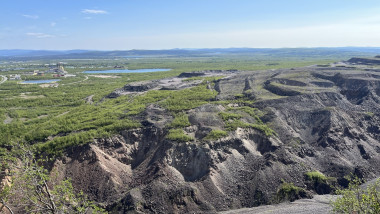It's a journey to the center of the rare earths discovered in Sweden
KIRUNA, Sweden — There are a number of sensations you experience as you make the 30-minute descent by pickup truck into the main tunnel of the LKAB iron ore mine in Kiruna, Sweden’s northernmost city. Your skin becomes noticeably drier, your ears pop and it’s hard to shake a feeling of isolation as the truck twists and turns on the darkened road, guided only by reflectors on the tunnel’s reinforced gray, stone walls.
When you finally reach the bottom, more than 4,000 feet beneath Earth’s surface, you discover a complex of brightly lit offices, a cafeteria and even a car wash.
The state-owned LKAB mine, which sits 125 miles north of the Arctic Circle, is one of the world’s largest sources of iron ore, used for making steel.
This year, the company made a game-changing discovery at the mine. Mixed in with the iron ore were rare earths — raw materials that are used to power motors in wind turbines, electric vehicles and a range of other products and that are critical for the transition to clean energy. The company said it found the largest-known deposit of rare-earth metals in Europe.
The discovery of the deposit, known as Per Geijer, comes as many European countries like Sweden try to develop energy independence. That includes breaking a reliance on China, which dominates the world’s supply and processing of key metals and minerals, including rare earths. It also comes as European countries seek to switch from fossil fuels to renewable energy sources like wind and solar, using technologies that rely on rare earths.
